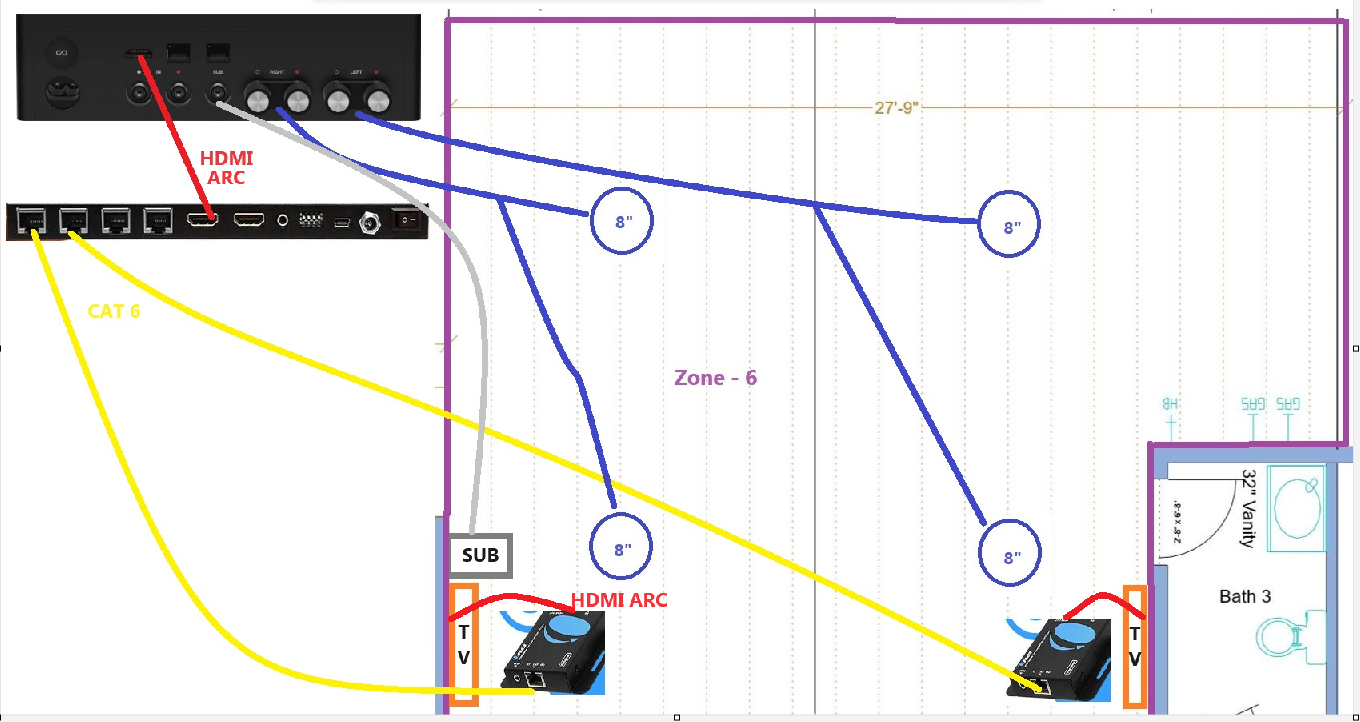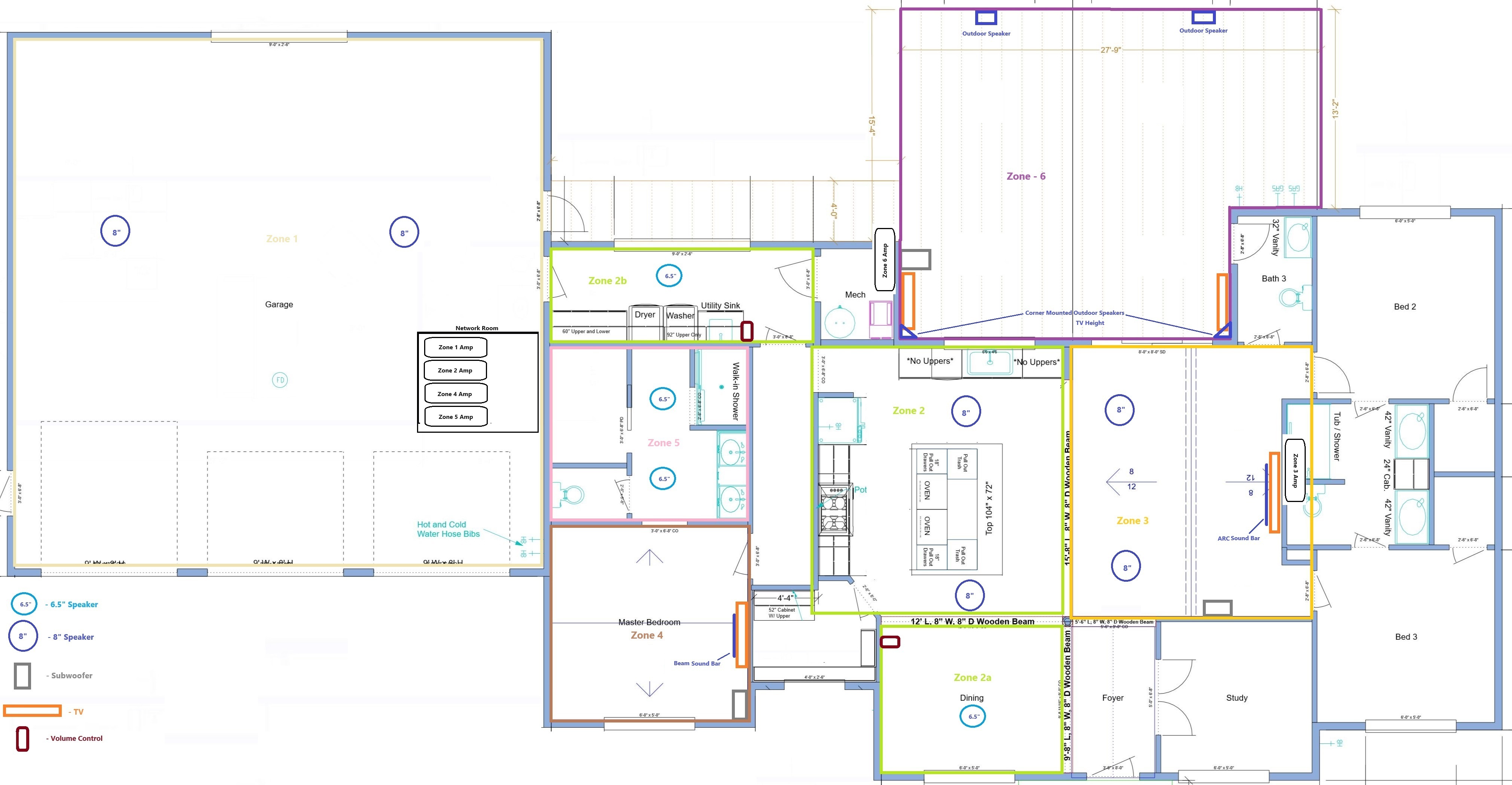

I am in the process of building a new home and would greatly appreciate some input on our whole home audio and video distribution.
I am looking to do 6 zones with the ability to expand to the additional bedrooms down the road. I plan to go ahead and coil wire in the attic for those rooms but don’t intend on setting them up day one.
The SONOS system seems to offer the best user experience and interface and I’m leaning that way after looking at several different whole home systems from HTD to Soundavo. But my concern with the SONOS systems are their ability to pass HDMI Arc through an extender. I have seen and read about running a fiber optic HDMI but never using an extender and I am curious if anyone has tried to do it successfully. My network closet is in conditioned space above the garage roughly 75’ from the living room and outside zone.
Our end goal is to have the ability to stream sporting events onto the porch and living room TVs with no lag in audio or video between them. I’m wanting to use the HDMI Splitter/Extender to deliver the video from a Roku or Chromecast while using the SONOS system to deliver the audio. But honestly, I’m not even sure if this is a possible solution to our idea.

